Some Notes on Mausritter

Mausritter is a TTRPG in which you play little adventuring mice trying to survive in a world of big dangers. If you’re a fan of the excellent comicbook Mouse Guard, you should already be hooked! The system is as minimalist as its protagonists, with low-prep two-hours adventures, so we played this a dozen times as an “interlude game”: the sort of game you play when a key player is missing, or in between campaign arcs. I also played this several times with TTRPG newbies, with up to 8 players! Here are my notes on Mausritter!
The Short Tail of It
To keep the story as short a mouse’s tail, I love Mausritter! It’s such as brilliant little game, it’s always fun to play, and it gets things done in under two hours. Just go buy it, take 20 minutes to read through the rules and the first adventure location, get the Foundry VTT module if you play online, and you’re good to go! Once you know the rules, you can grab a two-page adventure location at the last minute and prevent your game night from being cancelled when someone you need can’t make it.
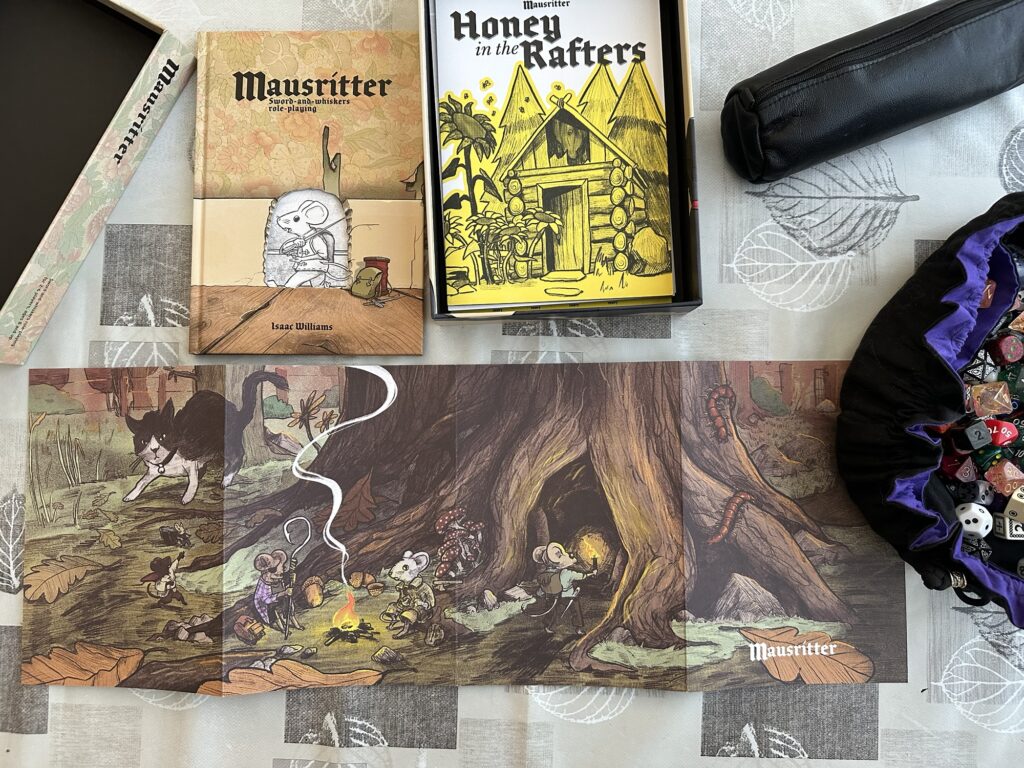
Oh, you’re still here? You want to know a bit more? Okay, let’s go!
The Boxed Set
The boxed set is very well done. You can get it from the official Mausritter website which, at the time of writing, features a new version of the boxed set that has different cover art but very similar, if not identical, contents.
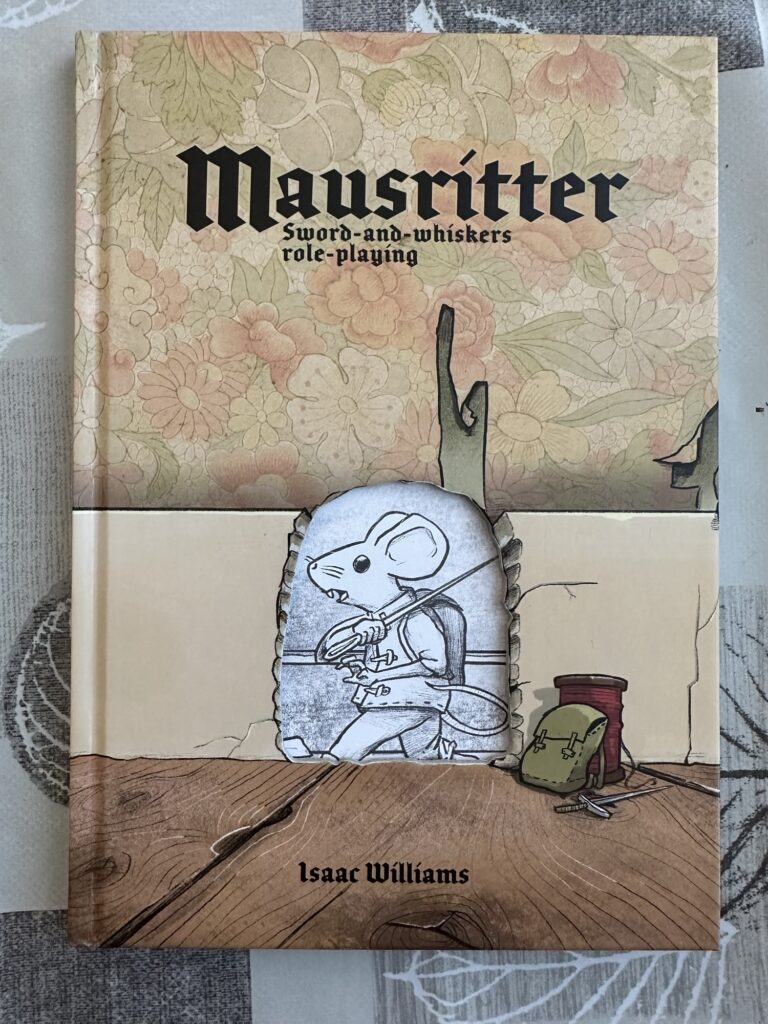
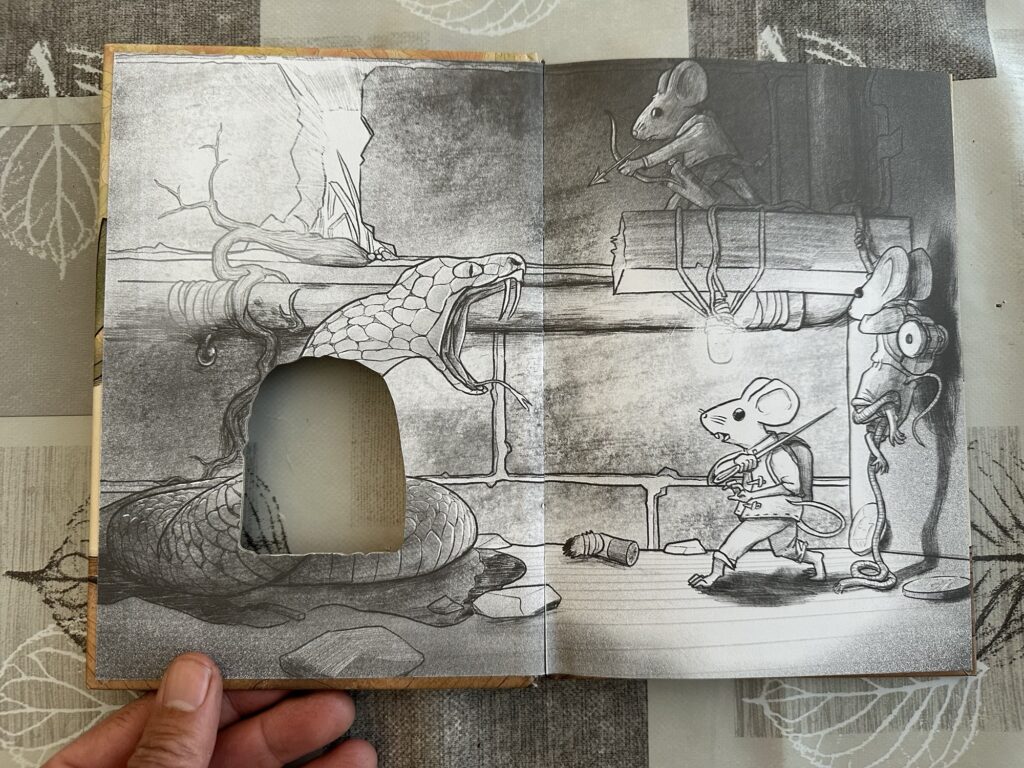
I love the the rulebook with a hole in the cover, representing a hole in a wall that reveals, once you open the book, a whole world of adventure where two little mice face off against a nasty garden snake. The new (even better!) art has a similar concept, but with a hole in a hollow tree trunk instead of a wall.

The rest of the boxed set includes a gamemaster’s screen, some reference sheets, a pad of character sheets, punch out equipment cards, and an extra adventure site called “Honey in the Rafters”.
The Game System
From the punch out equipment cards and the inventory slots on the character sheets, you can already spot one of Mausritter’s awesome minimalist and straightforward system ideas: encumbrance is handled by filling your mouse’s equipment slots, like what you’d find in a video game. You get one thing in each paw, two things on your body, and six things in your backpack. Most things are represented by a square token, and therefore take only one slot, but other things, like the bow, have a larger rectangular card and therefore take two slots, which means both more room but also requiring both paws to use! So simple and yet so effective!
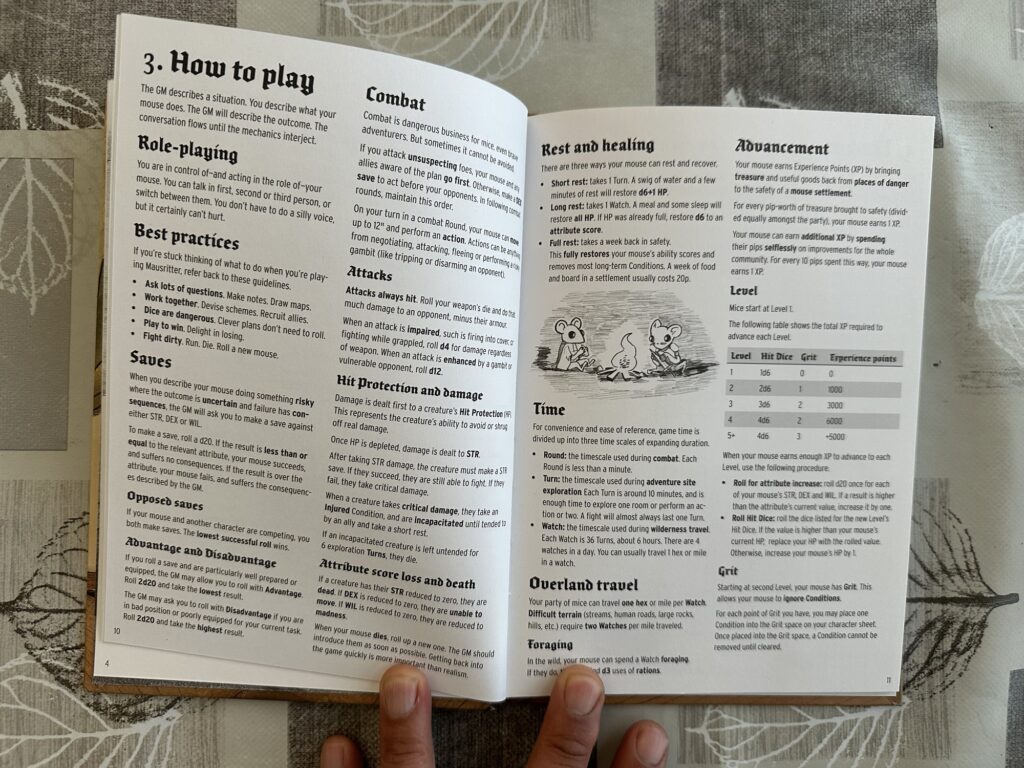

The rest of the rules are equally simple and straightforward: a couple of pages for character creation, a couple of pages for equipment, a couple of pages for the main rules, and a couple of pages for magic spells. If a great design is characterized by not being able to remove anything without breaking things, Mausritter shows a great design indeed.

With only three stats to roll against (STR, DEX, and WIL), things go very quickly. Combat is even quicker: you don’t roll to hit, everybody just hits automatically and rolls damage directly. But this doesn’t mean that dice rolling gets boring or limited. Life is dangerous for these little mice, and they don’t have many Hit Points to stand up against snakes, spiders, raccoons, owls, and more… so players need to get inventive to get to roll with Advantage, bump their damage die up, and leverage their equipment.
In my experience, it works best when you don’t roll often, but make these rolls count. Keep things moving fast, make the big wide world out there scary, create problems for the adventurers, go with the first thing your players say, and reward them occasionally with Advantages and new equipment. Even then, you’ll have a couple of dead mice on your hands, but luckily and unsurprisingly, it’s fast to create new ones.
The Earldom of Ek
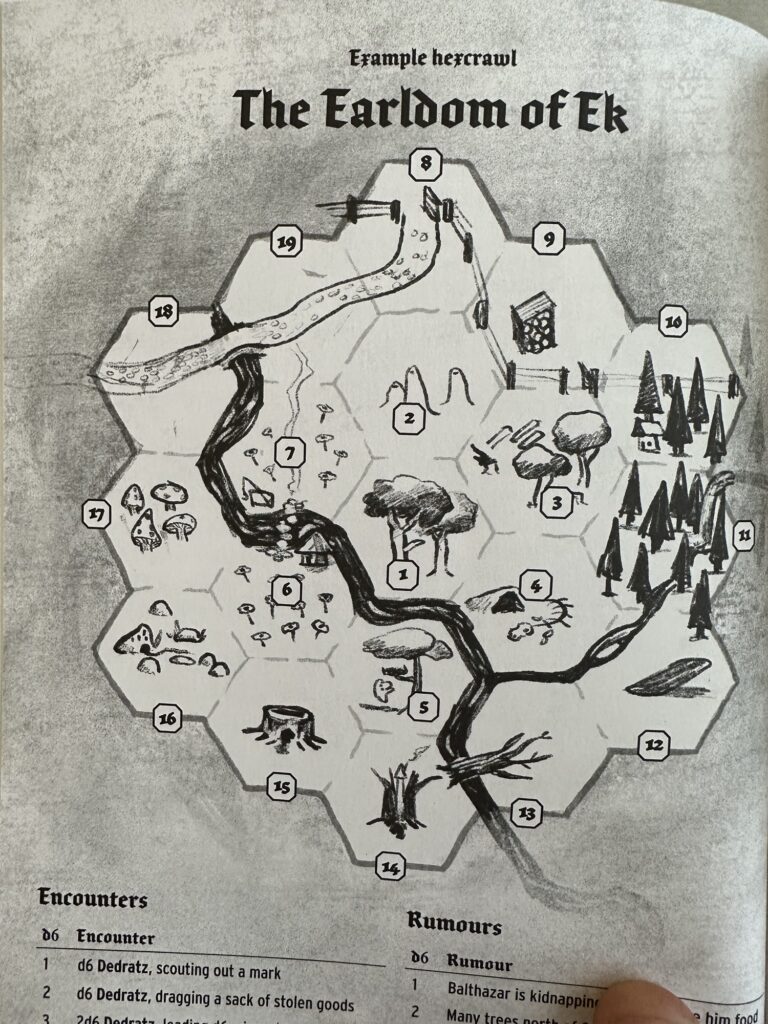
The default sandbox setting offered with the core game is the “Earldom of Ek”, a 3-by-3 hexmap with many fun locations to expand and explore. The adventure included in the rulebook starts in your hometown of Oaksgrove. Shipments of delicious cheese from Stumpsville have not been seen for the past week or so, and your mice adventurers are sent there to check it out.
Each Mausritter adventure site is generally a 2-pager: one page for the story hooks, general location description, encounter tables, and NPC stat blocks, and another page for the location’s map. The map usually doubles as a full-page illustration of the location site, and is therefore not meant to be a “tactical” map in any way.
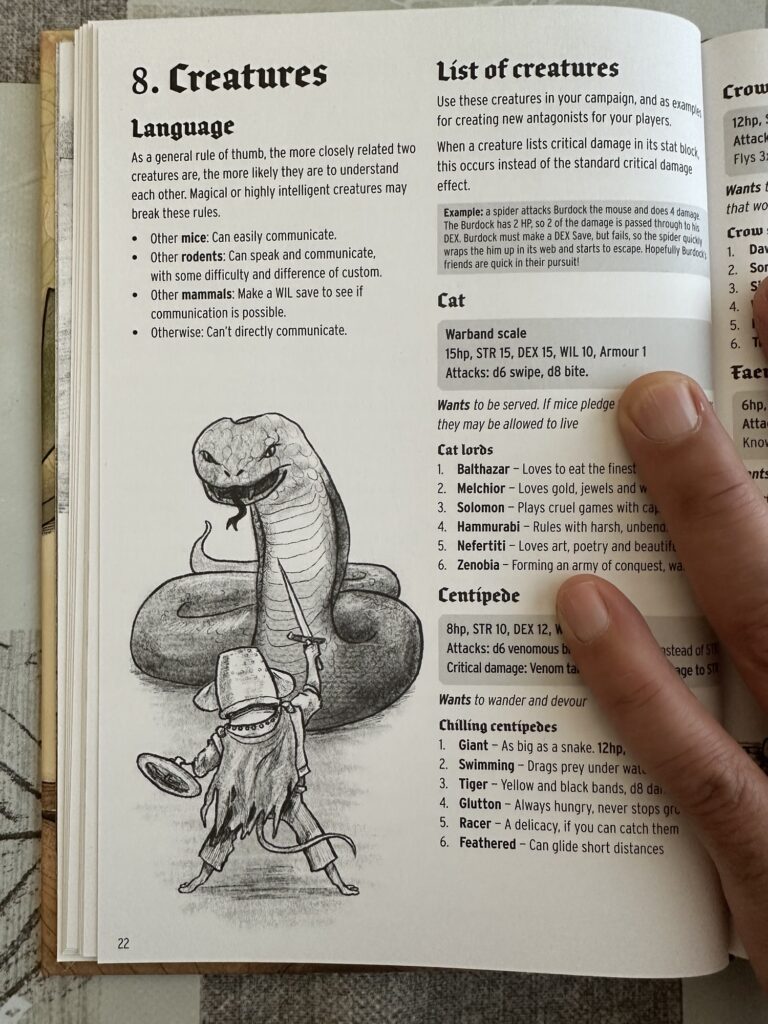
After completing the first adventure, it was easy to weave a vague campaign plot out of the several next one-shots we played in between our regular games. A lot of mice from Stumpsville are still missing, and you can easily place them in various locations around the map — starting with the location from Honey in the Rafters, the second adventure.
Adventure Awaits!
To get a good mileage out of Mausritter, don’t underestimate the fun of hexcrawling. The rulebook comes with simple and fun rules for travel, and a short bestiary full of everyday animals that you can describe in absolutely terrifying ways when considering the point of view of a small mouse. It’s such great fun! And it shows how dangerous it is for these little mice to even go 200 meters out of their home! It’s a big and scary world out there.
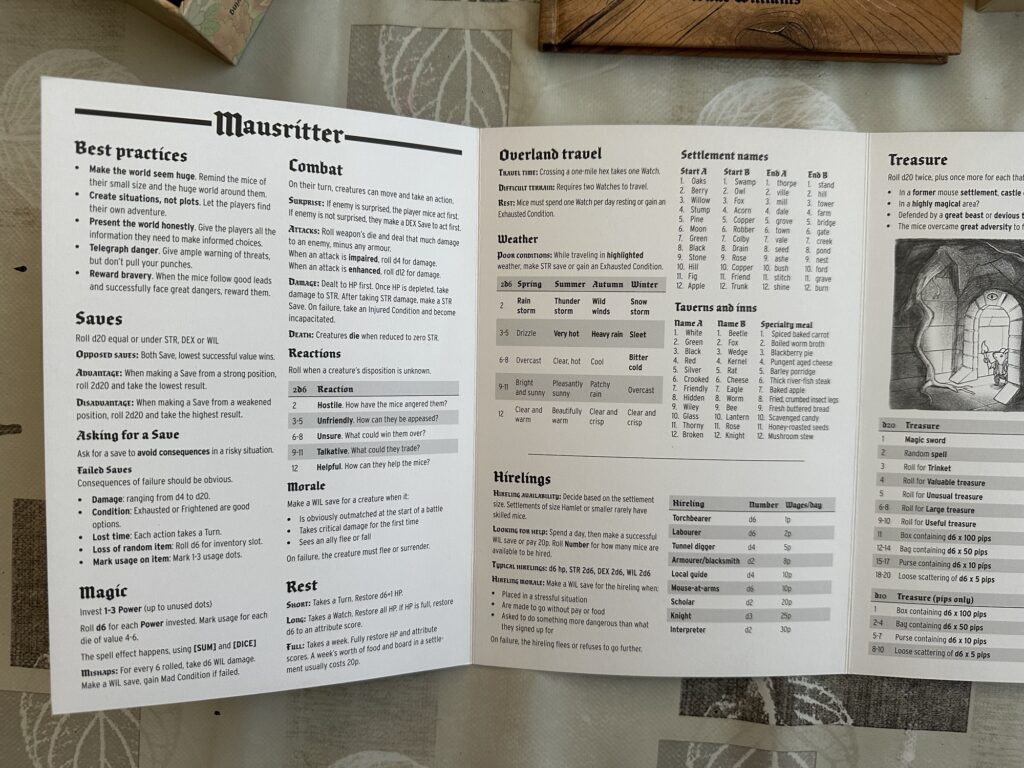
There are also many, many adventures to pick from. The official website has another full sandbox called “The Estate”, and the community around the game has produced large amounts of content, most of it also now indexed on the official website’s “Mausritter Library”. In addition to improvising hexmap locations on the fly for a last-minute drop-in Mausritter game, I have for instance used adventure sites like The Woodshed or Tower of Magnolia, although I tend to tweak them a bit to fit our campaign.

So that’s it for Mausritter! Unlike my previous “Notes on…” articles, you might notice I don’t have anything negative to say about Mausritter. I didn’t feel the need to change some of the rules, adjust some aspects of play, of disregard something I didn’t like. It’s just… perfect the way it is. Try it now!